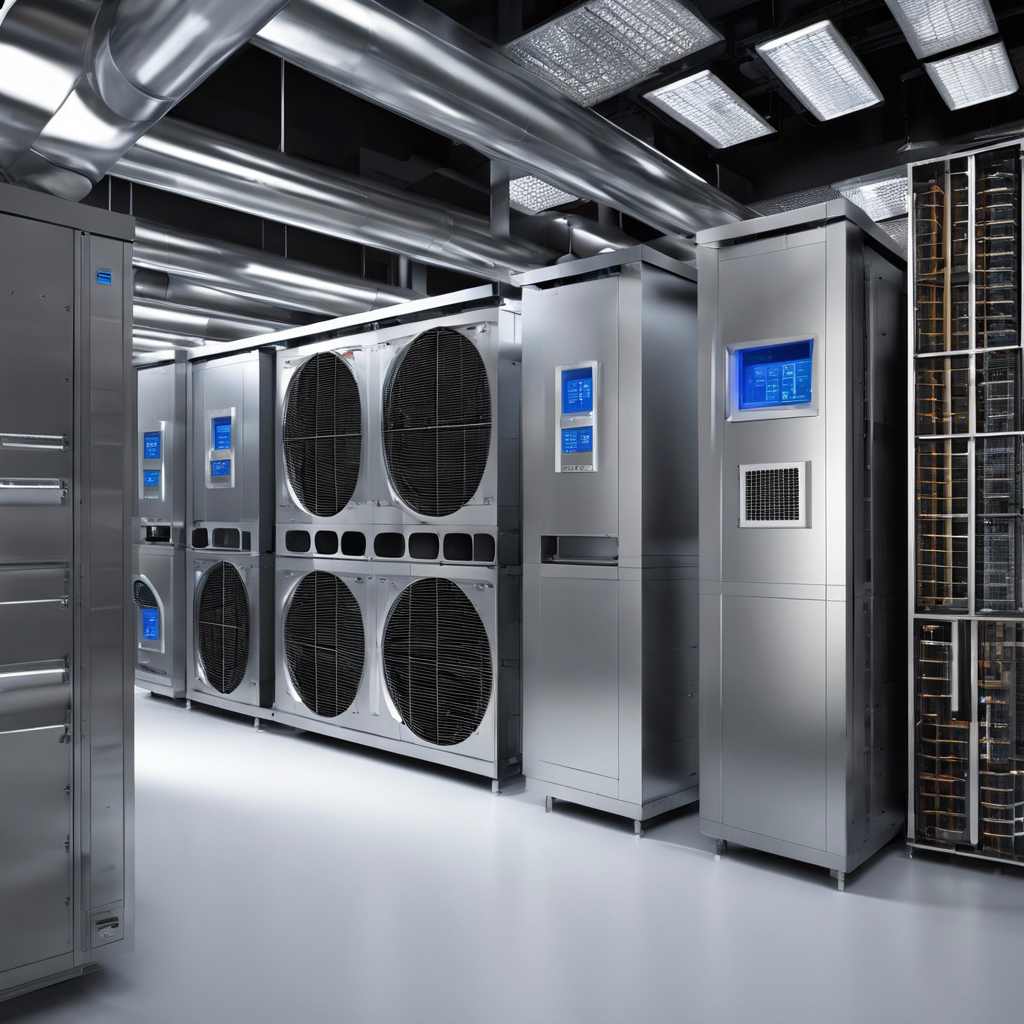Welcome to our introduction on VAV systems in HVAC, where we aim to enhance your understanding of variable air volume technology.
In the world of heating, ventilation, and air conditioning, VAV systems play a crucial role in regulating airflow based on cooling or heating demand.
By offering improved comfort and energy savings compared to constant volume systems, VAV systems have become widely adopted in various applications.
This introduction will delve into the operating principles, benefits, components, applications, and energy efficiency of VAV systems.
While there may be challenges and limitations associated with these systems, advancements in control algorithms and sensors are continuously revolutionizing their operation.
So, let’s explore the world of VAV systems and uncover their potential for efficient and comfortable indoor environments.
Key Takeaways
- VAV systems adjust airflow based on demand, resulting in energy-efficient HVAC operation.
- VAV systems provide better control over air distribution in different areas of the building, leading to enhanced comfort and indoor air quality.
- VAV systems offer individualized heating and cooling control for each zone within a building, ensuring optimal comfort levels while maximizing energy efficiency.
- VAV systems save more energy compared to constant volume systems, resulting in cost savings and reduced operating costs.
Operating Principles of VAV Systems
Operating on the principles of variable air volume, VAV systems adjust the flow of air based on demand, resulting in energy-efficient HVAC operation. These systems utilize VAV boxes, also known as VAV terminals, to regulate the air flow rate to specific zones within a building.
The VAV box is equipped with a sensor, typically a temperature sensor, that detects the demand for heating or cooling in a particular area. Based on this demand, the VAV box adjusts the damper position to control the amount of air delivered to the zone.
Unlike constant air flow rate systems, VAV systems can vary the air flow rate to match the requirements of each zone, ensuring optimal comfort and energy efficiency. This adjustment is made possible by the use of a pressure sensor in the VAV box, which continuously monitors the static pressure in the ductwork.
The pressure sensor sends signals to the VAV box, allowing it to modulate the damper accordingly and maintain the desired air flow rate. Overall, VAV systems offer precise control over air distribution, resulting in improved comfort and energy savings.
Benefits of Variable Air Volume Technology
Variable Air Volume (VAV) technology offers several benefits in HVAC systems.
Improved energy efficiency is a key advantage of VAV systems. They adjust the airflow based on the demand of each zone, reducing the fan speed and saving energy compared to constant volume systems.
Enhanced comfort is another benefit of VAV systems. By using an airflow sensor, VAV systems can automatically regulate the supply air temperature to maintain the desired temperature setpoint. This ensures a comfortable environment for building occupants.
Better control over air distribution is also achievable with VAV systems. Digital control allows for precise monitoring and adjustment of air distribution in different areas of the building. This ensures that thermal comfort is maintained consistently throughout the building.
In addition to energy efficiency and comfort, VAV systems contribute to better indoor air quality. They allow for enhanced ventilation control, ensuring that fresh air is delivered to each zone as needed.
Components of a VAV System
To further explore the functionality of VAV systems in HVAC, it is important to discuss the key components that make up a VAV system.
One of the main components is the air handler, which is responsible for conditioning and distributing the air throughout the HVAC system. The air handler takes in the outside air, filters it, and then cools or heats it depending on the desired temperature.
The conditioned air is then transferred to the main supply duct, which distributes the air to different zones or rooms.
Another important component is the VAV box, which is installed in each zone or room and is equipped with dampers, actuators, airflow sensors, and reheat coils. These components allow the VAV box to adjust the supply air based on the demand and temperature of the zone.
Applications of VAV Systems
One of the key applications of VAV systems in HVAC is their ability to provide individualized heating and cooling control for each zone within a building. This is achieved through the use of VAV boxes, which regulate airflow based on temperature sensor demand. By adjusting the airflow to meet the specific needs of each zone, VAV systems ensure optimal comfort levels while maximizing energy efficiency.
In a VAV system, the supply air duct delivers conditioned air to the VAV boxes located in each zone. These boxes then modulate the airflow based on the temperature requirements of the space. The VAV Air Handler, equipped with supply and return fans, ensures proper air circulation throughout the system.
VAV systems offer flexibility in both heating and cooling modes. In cooling mode, the VAV boxes reduce the airflow to maintain the desired temperature, while in heating mode, they increase the airflow to meet the heating demand. This individualized control allows for precise temperature regulation in different interior zones.
To enhance energy efficiency, VAV systems can be integrated with control strategies such as constant static pressure control and variable frequency drive. These strategies optimize the performance of the system by adjusting fan speed and airflow based on demand, resulting in reduced energy consumption and operating costs.
Energy Efficiency and Cost Savings With VAV
VAV systems in HVAC offer significant energy efficiency and cost savings. By varying the air volume based on cooling or heating demand, VAV systems can save more energy compared to constant volume systems.
One of the main ways VAV systems achieve energy efficiency is by utilizing dampers that open or close to control the airflow. This allows the supply of conditioned air to be adjusted based on the specific needs of each zone, resulting in reduced energy consumption.
Additionally, VAV systems can be integrated with other energy-saving components such as hot water valves to further optimize efficiency. By delivering a constant temperature and adjusting airflow as needed, VAV systems contribute to improved comfort and indoor air quality while minimizing energy wastage and reducing operating costs.
Frequently Asked Questions
How Does a Variable Air Volume VAV System Work?
A Variable Air Volume (VAV) system works by adjusting the airflow in HVAC systems based on demand, allowing for precise control over individual zones within a building. This enhances energy efficiency and can be achieved through temperature sensors, actuators, and VFDs.
What Is the Difference Between a Constant Air Volume System and a Variable Air Volume System?
A constant air volume (CAV) system maintains a consistent airflow, while a variable air volume (VAV) system adjusts airflow based on demand, making it more energy efficient. VAV systems offer benefits such as improved temperature control, cost savings, and integration with building automation.
What Is the Minimum Airflow Rate for a VAV Box?
The minimum airflow rate for a VAV box is determined by design considerations such as optimal ventilation, energy efficiency, occupant comfort, and noise reduction. Control strategies, airflow balancing, pressure control, and VAV box selection play a role in achieving the desired minimum airflow rate. Maintenance requirements should also be considered to ensure proper operation.
What Is the Difference Between VAV and Vrv?
VAV systems, compared to VRV systems, offer benefits such as improved comfort, energy efficiency, and cost savings in commercial buildings. Factors to consider when designing a VAV system include proper maintenance, integration with building automation systems, and the role of dampers.
Conclusion
In conclusion, Variable Air Volume (VAV) systems provide numerous benefits in terms of improved comfort and energy savings in HVAC systems.
By regulating airflow based on cooling or heating demand, VAV systems offer more precise and efficient operation compared to constant volume systems.
Despite challenges such as airflow imbalances and noise generation, advancements in control algorithms and sensors are driving the development of more efficient VAV systems.
Overall, VAV technology plays a crucial role in enhancing energy efficiency and cost savings in buildings.


